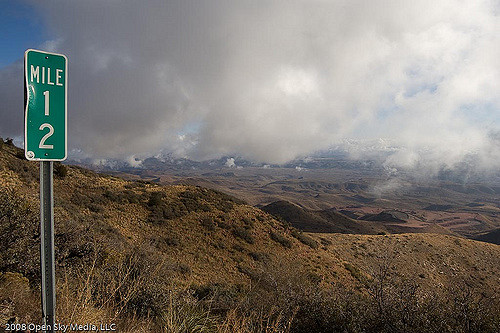
Photo by Jason Schultz; reprinted under Creative Commons license
I started my Fourth of July festivities by running the 10 kilometer (6.2 mile) Kenwood Footrace. My finish time was a bit slower than usual, as I haven’t been running much; instead, I’ve been doing long, fully-laden hikes in preparation for a 240-mile backpacking trip.
During a race, I get obsessed with those mile markers – if it took me 10:02 minutes to do the last mile, what will my finish time be? In preparation for my trip, I’ve been calculating miles as well – how many miles will I cover in a day, how many days’ worth of food can I carry at once, how far apart are my food resupply options.
How long does it take to travel a mile? It depends on so many factors: terrain, altitude, weather, how many I’m doing that day, how much weight I’m carrying, etc. The fastest I’ve ever run a mile was somewhere between six and seven minutes; climbing a mountain with a full pack, it may take me a full hour.
In so many areas of life, measurable outcomes are important – they allow us to track progress toward our goals. Every strategic plan or personal behavior change effort includes numeric milestones.
Of course, the “success” of a hike or run is not only about the number of miles covered or how fast it was accomplished. It’s in the beauty of a sunset, quiet moments of introspection, the joy of physical movement, and the satisfaction of completing a challenge. So too with our business or personal goals: don’t forget to admire the view!